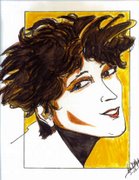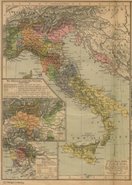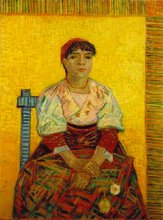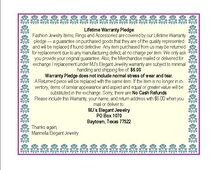July 28, 2006
Large Public corporations give the best empirical information for study, because they are usually long lived. Without the 400 years of boom/bust cycles of markets documented in the annals of economic world history, there would be no measure to use today for the management of assets. Today the markets’ activities are reported in the following distributions and publications:
- Press releases, annual reports and proxies
- Critical analysis, educated guesses, and applied reasoning
- Foundation, nuts and bolts, and backbone of the company
- Abstracts: Failure and success depending on what has been abstracted
- Web Sites with secondary sources
- Primary research if you can find it
“The approach to the Past always revolves around the same question: 'How did mankind in another time under other circumstances solve certain problems, and what were the [problems]?'” (Gideon, Pp. 670)
Organizational structure, therefore, is the evolution of the formal system of “task and reporting relationships that control, coordinate, and motivate employees so they cooperate and work together in achieving the firm's goals.” Good definition. In context of human nature and differing cultures, each company is very different in how it is structured. The differences are so vastly apart, it becomes impossible to compare the means and ends of the MNC's.
“Factors in the environment” helps to develop the structure. “These can include all sorts of factors from the changes in social, cultural and global environment around them.” (George & Jones, 2005, p. 505)
How do they do it?
Following are two Multinational Corporations I looked into. For a glimpse of their potential success due to their structures, I followed threads of their activities on the international scene. The time period of the changes in their structures covers from about 1990 to present, 2006.
ENRON: the other Crooked E Company
"One has only to open one's eyes to see that the triumphs of Industry, which have enriched so many practical men, would never have seen the light of day if only these practical men had existed, and if they had not been preceded by disinterested fools who died poor, who never thought of the useful, and who were not guided by caprice." -Henri Poincare, Science and Method
My Dad, just 83 years young himself, was at another’s “eightieth” birthday party last year. It was a republican affair, on behalf of his long time friend, retired Mayor of Houston. At the party Dad chatted with Tom DeLay, Republican member of the United States House of Representatives from Texas (1985-2005) and the [former] House majority leader. Dad, who has been eyewitness of extreme groups from Nazi-aeopia to Enron-ics, summed it up this way:
“He said he [Tom DeLay] got so wrapped up in the fast growing business, and responsibilities, that he became... well ... lost in trying to control all of it. He [DeLay]had no preparation in the [magnitude] of the tough decisions he had to make.”
Others say: “Ruling the House: How did an exterminator from Sugar Land transform himself into ‘the Hammer,’ a master vote-counter who consistently ekes out slim majorities on conservative bills? [He did it] ...by blending threats (withdrawing support in the next primary), rewards (committee assignments) and cold, hard cash. Through his PAC, DeLay donates more to his party's candidates than any other member of Congress.” (Andrew, Romano, 2005)
- And -
“...Controlling the Corporate Cash: With his kitchen-cabinet culture firmly in place, DeLay has focused much of his energy--especially since 2002, when he was elected majority leader--on fund-raising. In 1994, the Hammer launched his first PAC, Americans for a Republican Majority--with a $280,000 check from Enron. Since then, the Texas Assn. of Business has been indicted for misusing corporate funds, and watchdogs suspect his children's charity (assets: $4 million) of soliciting donations for political purpose. (Andrew, Romano, 2005)
The “Kitchen Cabinet Structure” referred to is a modern testament to operations out-distancing technology. “Enron-variety ” structures in the future may actually be a legitimate business structure, but today it failed to keep track of the “6500+ business partnerships [reported] worldwide, that it had in its ‘kitchen cabinets’ when its lid was put down, to the tune of $67 billion bankruptcy, largest ever.”
“The ...argument stems from the observation, made earlier, that much perception is dependent on processes of analogy. People are constantly interpreting new situations in terms of old ones. Whenever they do this, they are using the analogical process to build up richer representations of various situations.” (Hofstadter, Pp. 186)
Italy: The Piaggio Group -- less dramatic
Ambitions for the company despite “tepid investor” interest include plans to “boost Piaggio presence in emerging markets, especially India and China.” (Business; Pp 64 the Economist; July 15, 2006)
In 2003 decisions were made to get out of debt. This would make the Italian company able to negotiate from a position of strength. Piaggio’s head on bid to take on “Honda, Suzuki, and Yamaha... Japanese firms that dominate the scooter market” became the next goal after the cure. In 2003 the firm’s debts were 60% of the sales. Today it “seems to be working... as last year reported a profit of E38 million in E1.5 billion sales.” (Business; Pp 59 the Economist; July 15, 2006)
“The consolidated net profit was € 10.2 million, compared with a loss of € 10.9 million in the first quarter of 2005, and consolidated net debt decreased to € 397.7 million. As of July 11th, 2006, Piaggio & C. S.p.A.’s ordinary shares are listed at the Milan Stock Exchange.”
A company with a product: taking on the Japanese and succeeding, the firm was “Established in 1884 by Rinaldo Piaggio, and based in Pontedera, Pisa, Italy, the Piaggio Group operates globally in the light mobility vehicles industry, and is a leading manufacturer in the development, production and sale of two-wheeled vehicles.” (Piaggio & C. S.p.A... 2006)
The Group is “controlled by Immsi S.p.A., an industrial and services holding listed on the Milan Stock Exchange and headed by Roberto Colaninno, who is Piaggio Chairman. Including Aprilia and Moto Guzzi, acquired by Piaggio on December 30th 2004, and the Spanish manufacturer Derbi acquired in 2001.”
The annual production capacity is more than 610,000 vehicles in the two- and three-wheel segments and in four-wheel commercial vehicles:
- 7 production facilities, 4 in Italy and 3 abroad in Spain, India, and People’s Republic of China
- 5 R&D centers and
- total of more than 6,300 employees
- operations in over 50 countries
Piaggio product range feature scooters with engine sizes ranging from 50cc up to 500cc and motorcycles from 50cc up to 1.100cc with Piaggio, Vespa, Gilera, Aprilia, Moto Guzzi, Derbi and Scarabeo brands... The Group also manufactures three and four-wheel light commercial vehicles for utility and personal mobility, with the Ape, Porter and Quargo ranges. (Piaggio & C. S.p.A.; 2006)
Summary
The structure model-shifting going on in MNC's business is generating buzz, even if it is old news. Huge Multi-National Corporations move into exotic markets, and bring swift two-wheeled transport, and micro breweries, and debt forms that only corporate structures can produce when their eccentricity is more advanced than their technology.
"Global arena design” of Enron has led to the debacle witnessed. It had the idea it could shove its “multi-domestic US” corporate philosophy into all countries, mainly because all countries need energy. The Enron Chief Financial Officer became the leader most dumped on because the other branches acted without financial advice. And therefore the Kitchen Cabinets were stuffed with unreported activities. If no audit trail, then there is no corporation. Enron turned out to not be McDonald’s; unable to distinguish its desire to be “polycentric” energy for its business partners.
It turns out; while MNC’s make a way into emerging global markets they bring with them: air-conditioning to sweltering factories, new deals with labor unions, and supply chain sourcing for local cheaper parts from host countries’ existing core competency companies.
Piaggio is a Global Product Design global company, with an “h-form structure,” at present. The firm is reported very active in acquiring many enterprises in each host country it moves into. It is owned by the Immsi Holding Company, and there is little interdependence at present. The disadvantage of this structure is the possible significant duplication of efforts in the various divisions. For future considerations, the company may merge facilities and streamline its supply chains, leading to a less decentralized corporation. As it is now each division must develop its own ostensible operations around its own hot country’s cultural, legal, and political environments.
Mergers they have developed may be some of the most customer related mergers in the history of business. That is because the mergers are in context of completely differing cultures externally forcing decisions on C-Staff's that they would not encounter in their home towns. It is a prime example of an adage: “beware when an idea’s time comes.” I hope this introduces some to the future. Fin. (Patrick Darnell; Aug 2006)
References
Aguayo, Rafael, (1991) Dr. Deming, the American who taught the Japanese about Quality, 1991, Simon and Schuster, New York Foreword by W Edwards Deming
George, Jennifer M., and Jones Gareth R., (2006) Understanding & Managing Organizational Behavior, Prentice, Boston, MA, 2006
Economist, Business Section; the , pp 59-66, (July 15, 2006); South African business; Going Global, South Africa’s big companies have spread their wings abroad
Piaggio & C. S.p.A retrieved (July 2006) from www.piaggiogroup.com/copyright_en.htm"> This web-site is the sole property of ... TRADEMARK: ALBATROS, APE, APE MAX, APEPOKER, APRILIA, BEVERLY, CIAO, CELLA ESAGONALE NUOVO LOGO, COGUAR, DERBI, DNA, VESPA ET4, FREE, GILERA, HEXAGON, LIBERTY, MOTO GUZZI, NRG, PIAGGIO, PIAGGIO VTL, P DI PIAGGIO IN SCUDO E FIGURA, PORTER, RUNNER, SCARABEO, STALKER, TYPHOON, VESPA, VESPA CLUB, VESPA PX, X9, ZIP are registered trademarks and are exclusive property of Piaggio & C. S.p.A.
Article; SABMiller to boost Chinese production with acquisitions The Business Journal of Milwaukee July 24, 2006 retrieved from washington.bizjournals.com/milwaukee/stories/2006/07/24/daily2
Gislason, Stephen Adapted from Existence and the Human Mind , posted by alphaproject at philosophy2100.blogspot.com/2006/01/group-dynamics July 2006 Poincare, Henri; Science and Method
Romano, Andrew, (2005) Title: DELAY'S WHEELING AND DEALING, By: Newsweek, 00289604, 10/10/2005, Vol. 146, Issue 15 Database: Business Source
Darnell, Robert D.; (May/2006); interview; July 2006 paraphrased
Hofstadter, Douglas, and the Fluid analogies research Group, (1995) Fluid Concepts & Creative Analogies, computer models of the fundamental mechanisms of thought, Basic Books: Harper Collins, New York, 1995
Giedion, Sigfried; Space time and Architecture, (1961) book, Space, Time and Architecture The Growth of a New Tradition, Fifth Revised and Enlarged Edition Sigfried Giedion































No comments:
Post a Comment